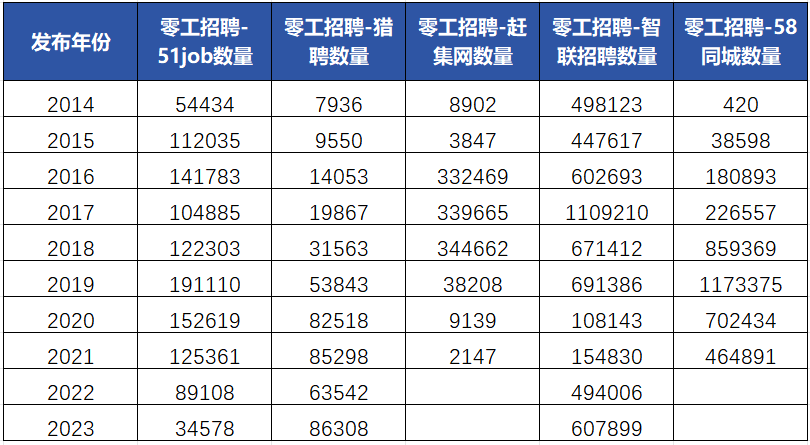The gig economy refers to short-term, flexible work arrangements that differ from traditional "9-to-5" employment, utilizing internet and mobile technologies to rapidly match supply and demand. It represents both an important component of the sharing economy and a novel allocation model for human resources. This economic sector primarily consists of freelancers undertaking fragmented tasks, facilitated through two main forms: crowd-based work and app-mediated on-demand labor.
This emerging economic model is gaining global momentum. According to data released by China's Ministry of Human Resources and Social Security in 2021, approximately 200 million workers in China are engaged in flexible employment arrangements.
The online recruitment dataset for China's gig economy is constructed through keyword searches including food delivery, Meituan, Ele.me, flash delivery, riders, Didi, chauffeur services, part-time jobs, side hustles, flexible employment, and platform economy. It aggregates gig economy recruitment information from five major sources, covering fields such as Company Name (公司名称), Work Address (工作地址), Position (岗位), Number of Openings (招聘人数), Compensation (待遇), Work Experience Requirement (工作年限), Education Requirement (学历), and Posting Date (发布日期), providing robust data support for related research.
Data Scope

Temporal Coverage
- Sources B, C, and E: May 2014 - 2023
- Source D: May 2014 - July 2021
- Source E: May 2014 - October 2021
Field Specifications
Sample Data
中国零工经济线上招聘数据-B来源
中国零工经济线上招聘数据-C来源
中国零工经济线上招聘数据-D来源
中国零工经济线上招聘数据-E来源
中国零工经济线上招聘数据-F来源
参考文献
- 莫怡青、李力行,2022:《零工经济对创业的影响——以外卖平台的兴起为例》《管理世界》第2期。
- Barrios,J. M.,Hochberg,Y. V. and Yi,H. Y.,2020,“Launching with a Parachute:The Gig Economy and New Business Formation”,Journal of Financial Economics.
数据更新频率
年度更新
